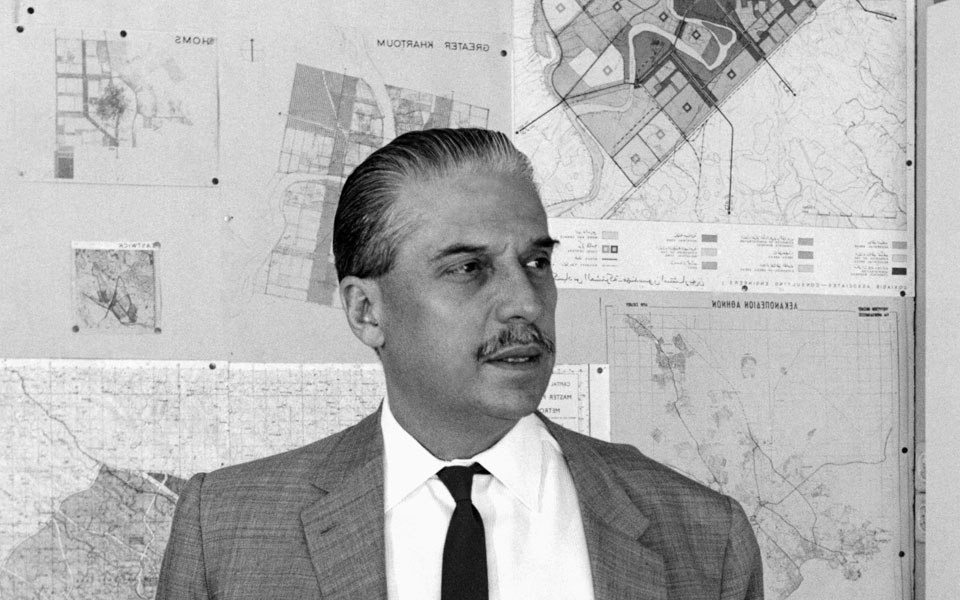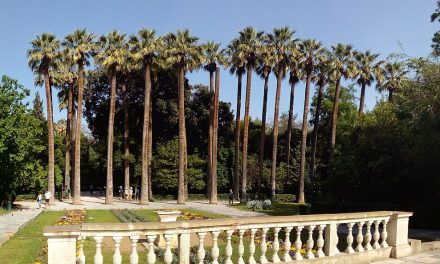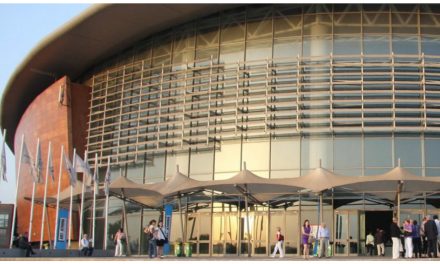Constantinos A. Doxiadis (1913–1975) was one the most prolific and influential architects and urban planners of the postwar period. He regularly put forward innovative proposals for the organization of the urban landscape and distinguished himself through his work across four continents. In the 1960s, he was the lead architect and planner of Islamabad, the new capital city of Pakistan. He was also known as the father of ekistics, which concerns the multi-aspect science of human settlements. A new exhibition on Doxiadis is underway at Onassis foundation (28.01-26.02.2023), under the title Constantinos Doxiadis’ Informational Modernism: The Machine at the Heart of Man, focusing on his concept of using computer data for building “human communities”. As we read in the exhibition’s website, Doxiadis was a man of many facets: “A modernist who approached technology and craft as a means of bringing about prosperity for humankind, and for society as a whole. The recipient of a doctorate in engineering from Charlottenburg University in Berlin (Technische Universität Berlin). Chief of the “Hephaestus” National Resistance Group during the Nazi occupation of Greece. Undersecretary and Director-General of the Hellenic Ministry of Housing and Reconstruction in post-war Greece. A man alert to the refugee experience through his family, who experienced the 1922 Asia Minor refugee tragedy first-hand.”
According to the five elements of Doxiadis’ Science of Human Settlements (Ekistiks), the human individual [anthropos] is the most important component of a city, one that – in combination with the other four elements (nature, society, shells, and networks) – leads to a city functioning harmoniously. At the very first Delos Symposium (1963), one of twelve he would organize in total, he noted: “The aim must be to produce settlements which satisfy man not only as parent and worker but also as learner and artist and citizen.” Ekistics attempts to encompass all scales of human habitation and seeks to learn from the archaeological and historical record by looking not only at great cities, but, as much as possible, at the total settlement pattern. He was also an architect open to the changes brought about by his times, while still retaining his admiration for the architectural space embodied by the ancient Greek “city”. At the Delos Eight Symposium, held in 1970, the participants had their eye on what was to come in future: “Information systems today have more power in social systems than ever because computers have magnified the capabilities of the human senses.”
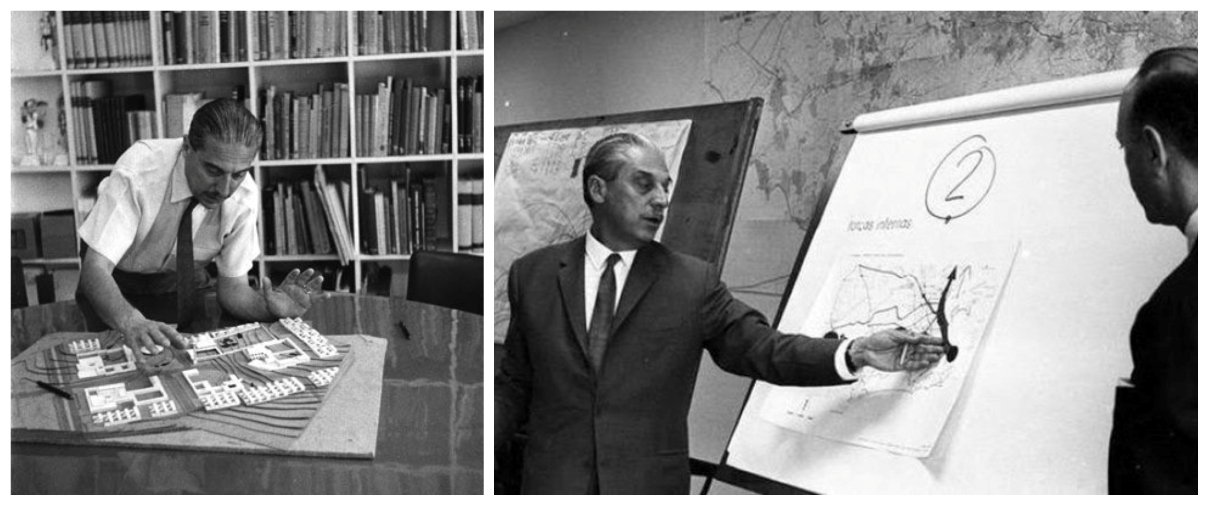
In the 1960s and 1970s, he authored books, studies, and reports including, those regarding the growth potential of the Great Lakes Megalopolis (the group of metropolitan areas in the Great Lakes region of North Amercia, such as Ontario, Toronto, Detroit-Windsor). At the peak of his popularity, in the 1960s, he addressed the US Congress on the future of American cities, his portrait illustrated the front cover of Time magazine, his company Doxiadis Associates was implementing large projects in housing, urban and regional development in more than 40 countries, his Computer Centre (UNIVAC-DACC) was at the cutting edge of the computer technology of his time and at his annual “Delos Symposium” the World Society of Ekistics attracted the world’s foremost thinkers and experts.
As far a his completed projects are concerned, on the one hand, we have his Aspra Spitia (“White Houses”): a model settlement he designed in 1963 to house the families of “Aluminum of Greece” employees – a settlement that also featured the first urban wastewater treatment plant of its kind in the country; on the other, we have his masterplan for the city of Islamabad, his plans for the reconstruction of Skopje after a catastrophic earthquake in 1963 – plans commissioned by the UN and the projects undertaken by “Doxiadis International Co. Ltd. – Consultants on Development & Ekistics” in 44 countries, with offices in the US, Iraq, Saudi Arabia, Pakistan, Bangladesh, Nigeria, Ghana, Libya, and elsewhere. Recently, a group of architects and intellectuals from North Macedonia have submitted a request to the City Council and the mayor of Skopje, to name a street in Skopje after the Doxiadis to highlight his contribution to the restoration of the city after the destruction of 1963. A list of his most important projects implemented around the world can be found here.
Among his most notable works are Islamabad, the Capital of Pakistan, The Developing Urban Detroit Area, Guanabara and Rio de Janeiro Master Plan, Aspra Spitia, A New “Greek” City, The University of the Punjab and the Doxiadis Office Building.
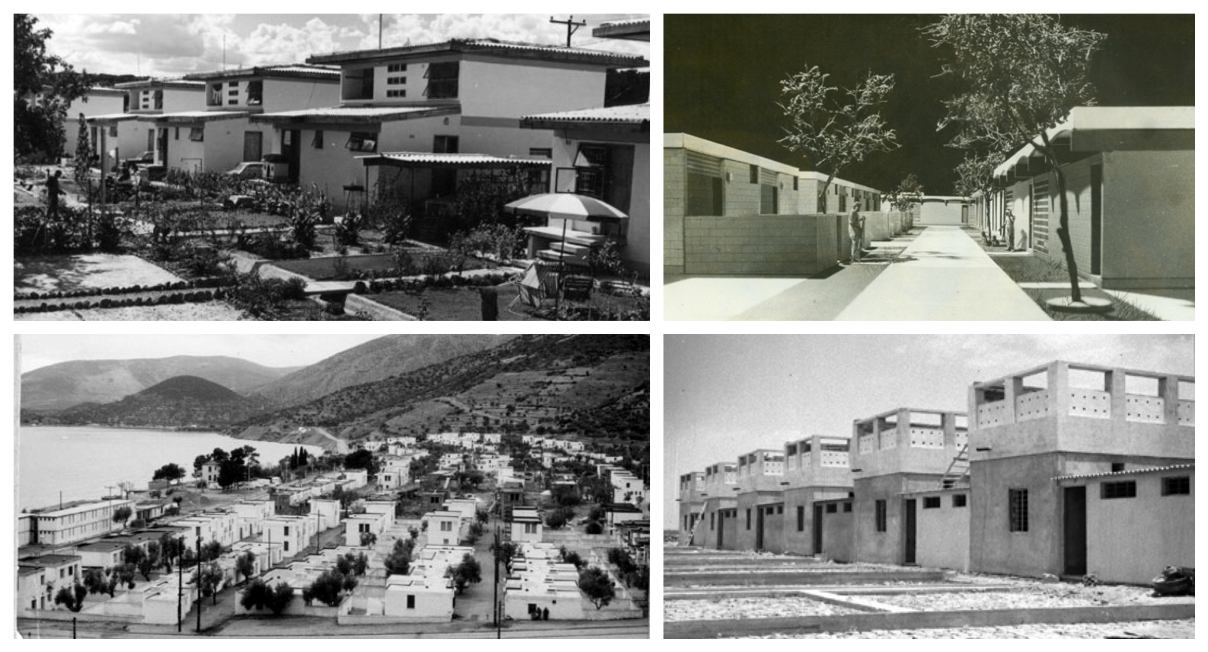
Islamabad, the Capital of Pakistan
One of Doxiadis’s best-known town planning works is Islamabad. There were many reasons for which Pakistan needed a new capital city. In the early 50s, during the first stages of the life of the new country of Pakistan, Karachi had been selected as the capital, since it was a large city and a convenient centre of sea an air transportation. However, the layout and structure of the existing port city did not allow it to take on the functions of a modern capital and the influx of refugees intensified the existing problems and created new ones. Constantinos Doxiadis’ and Doxiadis Associates’ plan for Islamabad, designed in the late 1950s, separates cars and people, allows easy and affordable access to public transport and utilities and permits low cost gradual expansion and growth without losing the human scale of communities.
Islamabad is now a fast-growing city of about 1.2 million inhabitants, forming, together with the adjacent old city of Rawalpindi and a National Park, a Metropolitan Area of about 4.5 million inhabitants. According to Emeritus Professor I.M Frantzeskakis, the combined land use–transportation planning of Islamabad, the clear hierarchy of residential communities and the segregation of related functions and of the transport system (i.e. high/low speed Road Traffic, Public Transport, Bicycles, Pedestrians, etc.) result in the reduction of trip lengths and an overall better quality of like. Islamabad is a remarkable example of a new city where the concept of “sustainability”, although the particular term was not used at the period of its planning, was applied to create a “City of the Future”. Planned in the period 1959-63 on the basis of the ekistis, the “science of human settlements”, Islamabad is being developed fully respecting the “Doxiadis Plan” as the Pakistanis refer to the Master Plan and other related studies on which the implementation is based. Islamabad is a unique example of a large new city “planned for the future and built for the present”, fully respecting long-term planning. The present quality of life in Islamabad is made apparent from the satisfaction expressed by the people who live and work there and by the wish of others to reside in the new city.
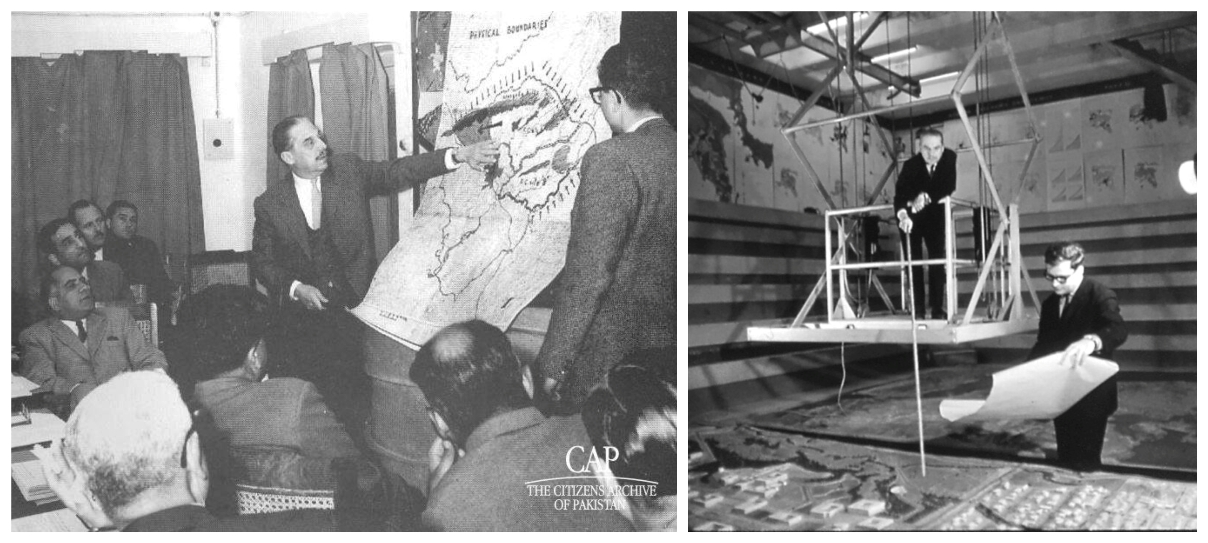
Aspra Spitia. A New “Greek” City
Aspra Spitia is a small settlement planned by Doxiadis Associates for the company “Aluminion de Grece” to house industrial workers and personnel employed at its nearby aluminum plant. Aspra Spitia (modern Greek for “White Houses”), situated on the coast of the Corinthian Gulf about one hour’s drive from Delphi, was designed for a projected population of 5,000. The program proposed the construction of a total of 1,100 dwellings, including one and two-storey houses, bachelor apartments, stores and shops, a customs house, a school and recreational and other facilities. Doxiadis Associates carried out not only the pure planning work (general plan and layout plans for residential communities and central areas), but also the study of the house types and buildings, the design of the infrastructure (water and electricity supply, sewer and storm water networks), the compilation of the tender-documents and the supervision of the implementation. The project was assigned in 1961. The last house of the initial program was completed in 1965.
Biographical Note
Constantinos A. Doxiadis, the son of Apostolos and Evanthia (Mezeviri) Doxiadis, was born in 1913. Constantinos Doxiadis graduated as Architect-Engineer from the Athens Technical University in 1935 and obtained his doctorate at Charlottenburg University, Berlin, one year later. In 1937 he was appointed Chief Town Planning Officer for the Greater Athens Area and during the war (1940-1945) held the post of Head of the Department of Regional and Town Planning in the Ministry of Public Works while also serving as a corporal in the Greek Army.
At the time of Greece’s liberation in 1945 he left the army with the rank of captain, and went to the San Francisco Peace Conference as a member of the Greek delegation. From 1945 to 1951 Doxiadis was one of the prime leaders in restoring Greece to a normal peacetime existence, first as Undersecretary and Director-General of the Ministry of Housing and Reconstruction (1945-48), and subsequently as Minister-Coordinator of the Greek Recovery Program and Undersecretary of the Ministry of Coordination (1948-51).
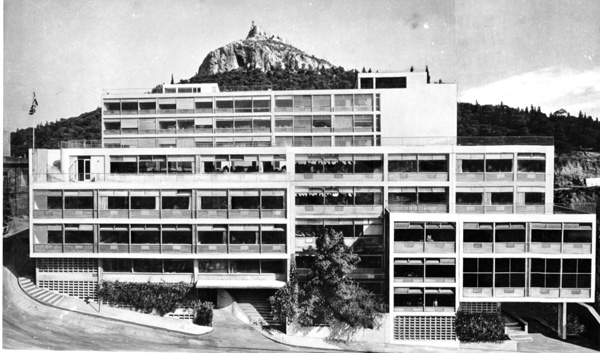
In 1953 he founded Doxiadis Associates, a private firm of consulting engineers, with a small group of architects and planners, many of whom had worked with him on the Greek Recovery Program. The company grew rapidly until it had offices on five continents and projects in over 40 countries, acquiring its legal form as DA International Co., Ltd., Consultants on Development and Ekistics, in 1963. In 1958 Doxiadis founded the Athens Technological Organization (ATO, also known as the “Doxiadis School”, from which more than 25,000 engineers, architects and decorators have graduated) and in 1963 the Athens Center of Ekistics. From 1958 to 1971 he taught ekistics at the Athens Technological Organization and lectured at universities all over the United States as well as at Oxford and Dublin.
In 1963 and 1964 he served as representative of Greece on the Housing, Building and Planning Committee of the Economic and Social Council of the United Nations in New York and was chairman of the Session on Urban Problems at the UN Conference on the Application of Science and Technology for the benefit of the less developed areas held in Geneva in 1963. During his lifetime Doxiadis received several awards and decorations, both civil and military as well as one posthumous award, the Royal Architectural Institute of Canada’s Gold Medal for 1976.
Reasearch projects
The goal of the Athens Center of Ekistics (ACE)was to foster a concerted program of research, education, documentation, and international cooperation related to the art and science concerned with the development of human settlements. Its publications include Ekistic: the Problems and Science of Human Settlements, the Ekistic Index of Periodicals, and also a series of research reports and monographs documenting its four major research projects: City of the Future (COF), Human Community (HUCO), Capital of Greece (COG), and Ancient Greek Cities (AGC).
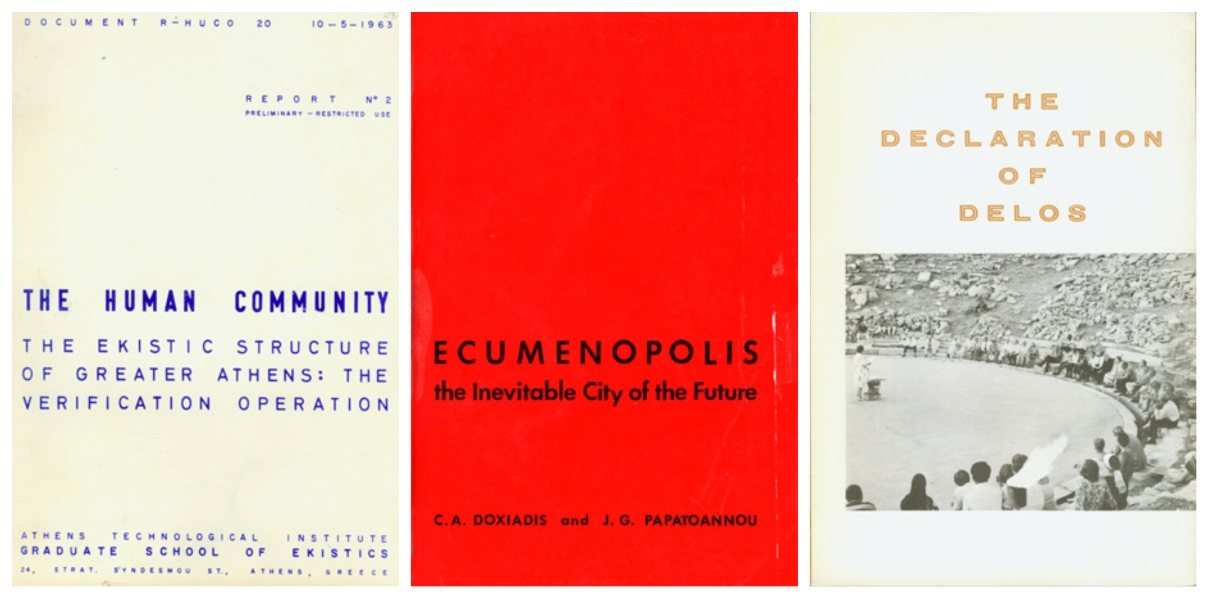
Human Community
The research project of the Human Community (HUCO) commenced in 1961 with an attempt to study and categorize urban settlements at the micro-scale. The purpose of the project, as its name implies, was to identify, describe and finally prescribe, adequate ekistic units at the local neighborhood level, which can contribute to a residential environment within which the fulfillment of human values and needs is predominant. The long experience of Doxiadis Associates, over a period of three decades, had resulted in the formulation of a progressive integration of communities in a hierarchical pattern. The Human Community project used the rapidly expanding city of Athens as “laboratory” and its research team was engaged in a systematic analysis of the communities within this urban framework.
In the 1960s, Doxiadis Associates ran The Human Community, a Doxiadis Associates Computer Center (DACC) assisted study of Athenian residents that gauged their adaptation to the growth and pace of the postwar city. With its mainframe UNIVAC and spinning tape drives, DACC was a startling venture for an architecture office in the 1960s. Doxiadis belonged to a cohort of international architects and intellectuals appraising the implications of new digital technologies for the future of cities. Unlike his peers, who often considered this impact abstractly or theoretically, the techniques and products of computation were deeply integrated into Doxiadis’ practice. For Doxiadis, community was an ideal of social integration and resident satisfaction. It was also a dynamic measure of urban scale seen via neighborhood boundaries made volatile by postwar upheaval and migration. The Human Community and DACC mark a pivotal early moment in the historical formation and articulation of computational urbanism.
The methods employed included both field operations to acquire new data, as well as the analysis of existing reports and information. The operations in the field have consisted of four major undertakings: The Overall Survey, The Verification Operation, The Household Survey and subsequent Follow-up Surveys. The findings of the project were presented in a condensed form in various articles and lectures. The internal documents (reports, drafts, correspondence, graphs and maps) as well as the material of the household questionnaire are kept in the Constantinos A. Doxiadis Archives and are accessible to the researchers.
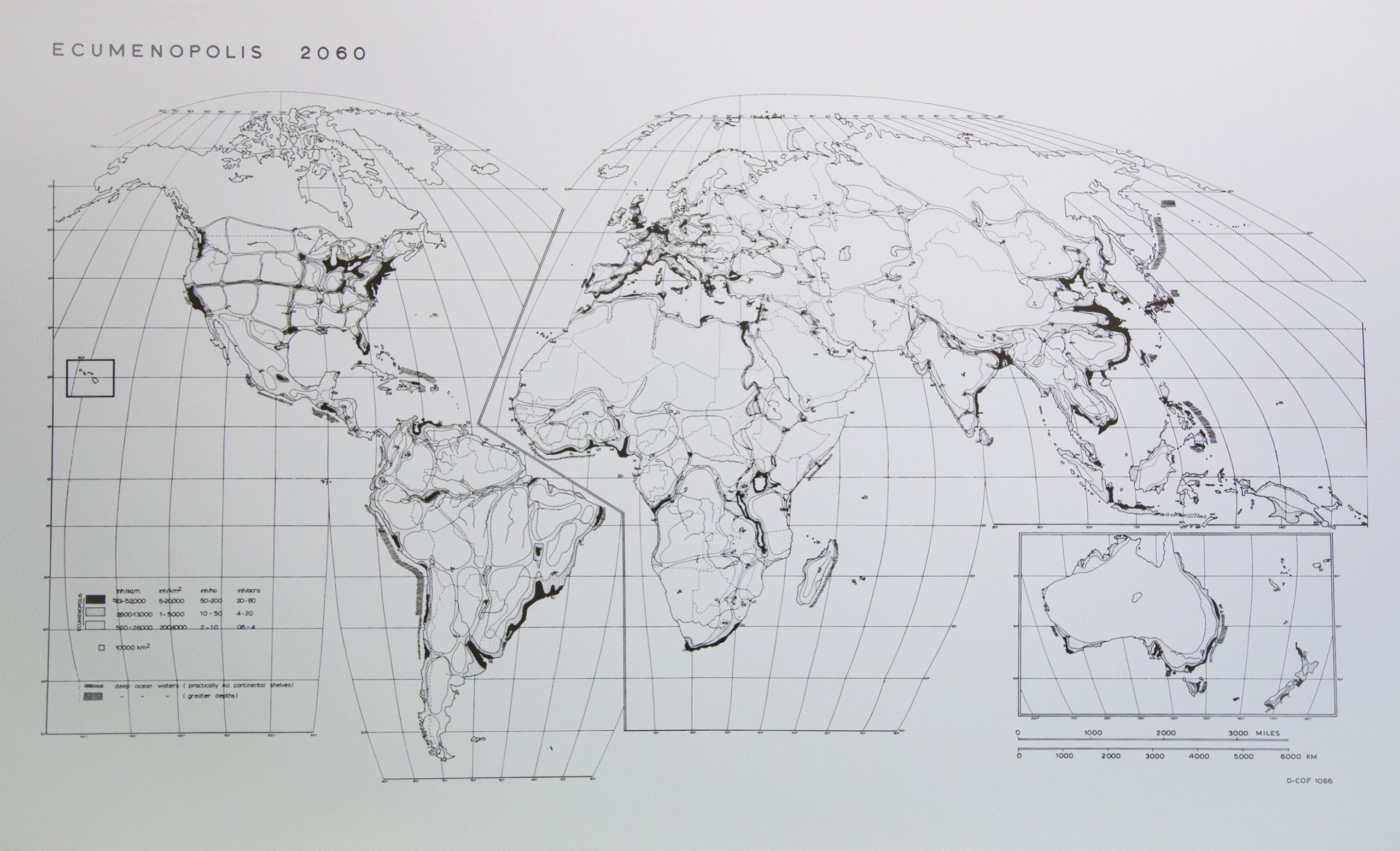
City of the Future
The “City of the Future” project studied the largest scale of human settlements and is mainly concerned with the long-range future projections of urban development. It postulates a new era of dynamic balance to re reached in a century. “Ecumenopolis” is the megapolis that by the 22nd century would have occupied the whole of the inhabited planet. “Ecumenopolis” will come after a “megalopolitan era” with more and larger megalopolises than the ones already emerging. The approach tends to synthesize a considerable number of partial aspects into a total picture on the basis of an ad hoc evolved methodology.
Ancient Greek Cities
Constantinos A. Doxiadis published his first study of Ancient Greek Cities in 1937. Since that time, he continued to explore this subject with undiminished interest in his aim “to reach a better understanding of the problems related to human settlements by studying their past history” and to learn from ancient types of settlements with regard to construction based on a human scale.
According to the instruction given by C.A. Doxiadis at that time, “the research would cover ekistic phenomena in the wider, not the narrow, sense of the term, in order to deal with the development of settlement from its start, from the selection of the space for man’s living, to its completion and artistic expression through buildings and monuments. We would attempt, in other words, to cover the entire phenomenon of our life system which exists behind these, as represented by geography, history, man and his life, the multitude of their expressions in space.”
See also from Greek News Agenda: Tomorrows – Urban fictions for possible futures
With information from: Doxiadis.org; Constantinos Doxiadis’ Informational Modernism: The Machine at the Heart of Man | Onassis Foundation; Wikipedia
I.L.
TAGS: ARCHITECTURE

